
All birth control methods provided at C3 are reversible, which means you can stop using the method at any time. The contraception options we offer are listed below in order of effectiveness based on typical use. We are here to answer any questions you have. We accept Medicaid and most commercial plans. If you are uninsured or if your insurance does not cover birth control, you may qualify for free or low-cost services through The Right Time.
All images on this page used with permission from Bedsider, an online birth control support network.
Highly effective birth control
Your healthcare provider inserts these forms of birth control. They help prevent pregnancy for years before they have to be replaced – the implant is effective for up to three years, and the IUDs can prevent pregnancy for up to five to 10 years.
The implant and IUDs
The Implant
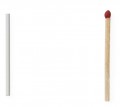
The implant is a small, flexible rod – about the size of a matchstick – that’s inserted under the skin of your upper arm by your healthcare provider. It releases a hormone called progestin, which keeps your ovaries from releasing eggs. Progestin also thickens your cervical mucus, which helps block sperm from getting to the egg in the first place. The implant helps prevent pregnancy for up to three years but can be removed sooner.
Implant Fact Sheet (pdf)>>
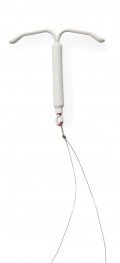
Hormonal Intrauterine Device (IUD)
The hormonal IUD is a small piece of T-shaped plastic that is put into your uterus by your healthcare provider. It releases a small amount of a hormone called progestin, which blocks sperm from getting through your cervix and into the uterus. Unlike a copper IUD, the hormonal IUD may make your periods lighter, or even go away. It lasts up to five years, but you can ask for it to be removed at any time.
Hormonal IUD Fact Sheet (pdf)>>
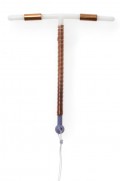
Copper Intrauterine Device (IUD)
The copper IUD is a small piece of T-shaped plastic that is put into your uterus by your healthcare provider. This type of IUD includes a small amount of copper, which is natural and safe. It changes the way sperm move and prevents them from fertilizing an egg. It’s 100% hormone-free and doesn’t alter your periods. It helps prevent pregnancy for up to 10 years, but it can be removed sooner if you request.
Copper IUD Fact Sheet (pdf)>>
Effective birth control
These hormonal contraception methods require you to remember to take regular action – like taking a pill every day or getting a shot every three months – for them to be effective.
The shot, the pill, the ring and the patch

The Shot
The shot contains progestin, a hormone that prevents your ovaries from releasing eggs. It also thickens your cervical mucus, which helps block sperm from getting to the egg in the first place. You need to see your healthcare provider every three months for a shot.
Injectable Contraception Fact Sheet (pdf)>>
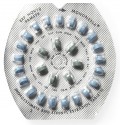
Pills
Birth control pills must be taken every day at the same time to be effective. They contain two hormones, estrogen and progestin, that keep your ovaries from releasing an egg. There are many different kinds of pills on the market. Most pills follow a monthly cycle with 21 days of active pills and seven days of inactive or “placebo” pills; however, extended-cycle pills, which delay or even eliminate your period, are also available. You need a prescription from your healthcare provider to use the pill.
Birth Control Pill Fact Sheet (pdf)>>
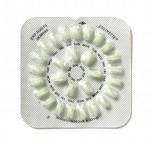
Progestin-Only Pills
Also known as the mini-pill, these have no estrogen and may be a good option for women who cannot use estrogen-containing birth control. They contain progestin, a hormone that thickens your cervical mucus and blocks sperm from getting to the egg. Unlike most other birth control pills, there is no pill-free/placebo week, so your period might not be predictable. You need a prescription from your healthcare provider to use the pill.
Progestin-Only Pill Fact Sheet (pdf)>>
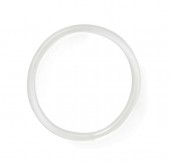
The Ring
About the size of a ponytail holder, the ring is a flexible piece of plastic that you insert into your vagina. It contains two hormones, estrogen and progestin, that prevent your ovaries from releasing an egg. You leave the ring in for three weeks, then take it out for one week. You need a prescription from your healthcare provider to use the ring.
Vaginal Ring Fact Sheet (pdf)>>
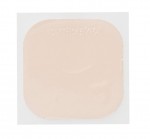
The Patch
The patch is a thin, beige piece of plastic that looks like a square bandage. You stick it onto your skin, and it releases two hormones, estrogen and progestin, that keep your ovaries from releasing an egg. You wear each patch for a week and change it weekly for three weeks. The fourth week you leave it off. You need a prescription from your healthcare provider to use the patch.
Contraceptive Patch Fact Sheet (pdf)>>
Less effective birth control
To prevent pregnancy, these methods have to be used correctly every single time you have sex. Any small mistake greatly increases the chance that you could get pregnant.
Condoms, diaphragms, the sponge, spermicide, the cap, withdrawal, fertility awareness and abstinence

Condoms
Condoms are one of the most popular forms of birth control. Usually made of latex, they slip over the penis to prevent sperm from getting into the vagina. You can also use a female condom, which is inserted into the vagina. Condoms also lower the risk of sexually transmitted infections. They have to be used – and used correctly – every time you have sex to prevent pregnancy.
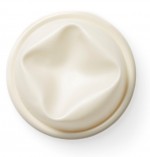
Diaphragm
A diaphragm is a shallow, dome-shaped cup made of latex or silicone. You insert the diaphragm into your vagina, where it covers your cervix and keeps sperm out of your uterus. It is most often used with spermicide. For a diaphragm to work effectively, you must use it every time you have sex. You need a prescription from your healthcare provider to use the diaphragm.
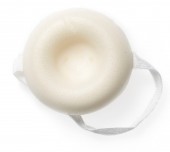
Sponge
The sponge is a round piece of white plastic foam that you insert into your vagina before you have sex. The sponge works in two ways – by releasing spermicide, which slows down sperm, and by blocking the cervix, which keeps sperm from getting into your uterus. It must be used every time you have sex.

Spermicide
Spermicide is a chemical that stops sperm from moving. It comes as creams, films, foams or, gels, as well as pill-shaped suppositories that you put into the vagina. Spermicide must be used every time you have sex to prevent pregnancy.
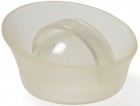
Cap
The cervical cap is a silicone cup shaped like a small sailor’s hat. You insert it into your vagina to cover your cervix and keep sperm out of your uterus. It is usually used with spermicide. For a cap to work effectively, you must use it every time you have sex.

Withdrawal (Pull Out)
Withdrawal, also called the “pull-out method,”is the oldest form of birth control. Your partner has to pull out of your vagina before he ejaculates. Some people do not like this method because they feel it interrupts the moment. You and your partner have to get it right — every single time — for withdrawal to be effective.

Fertility Awareness
Also known as “natural family planning”, fertility awareness means identifying the time in your cycle when sex is most likely to result in pregnancy. This natural family planning method relies on you tracking your menstrual cycle to determine the days you are most likely to get pregnant, or watching your body for signs when you are most fertile. It can be tricky to figure out when those days are, and you have to abstain from sex on the days you are at risk for pregnancy. For this method to work, it is important that you have regular periods.

Abstinence
Abstinence (not having sex) is the only birth control method that guarantees you won’t get pregnant — if you use it 100 percent of the time. You’ll also avoid sexually transmitted infections. It does require a lot of self-control, and many women eventually prefer to transition to a birth control method that helps prevent pregnancy if they choose to have sex.